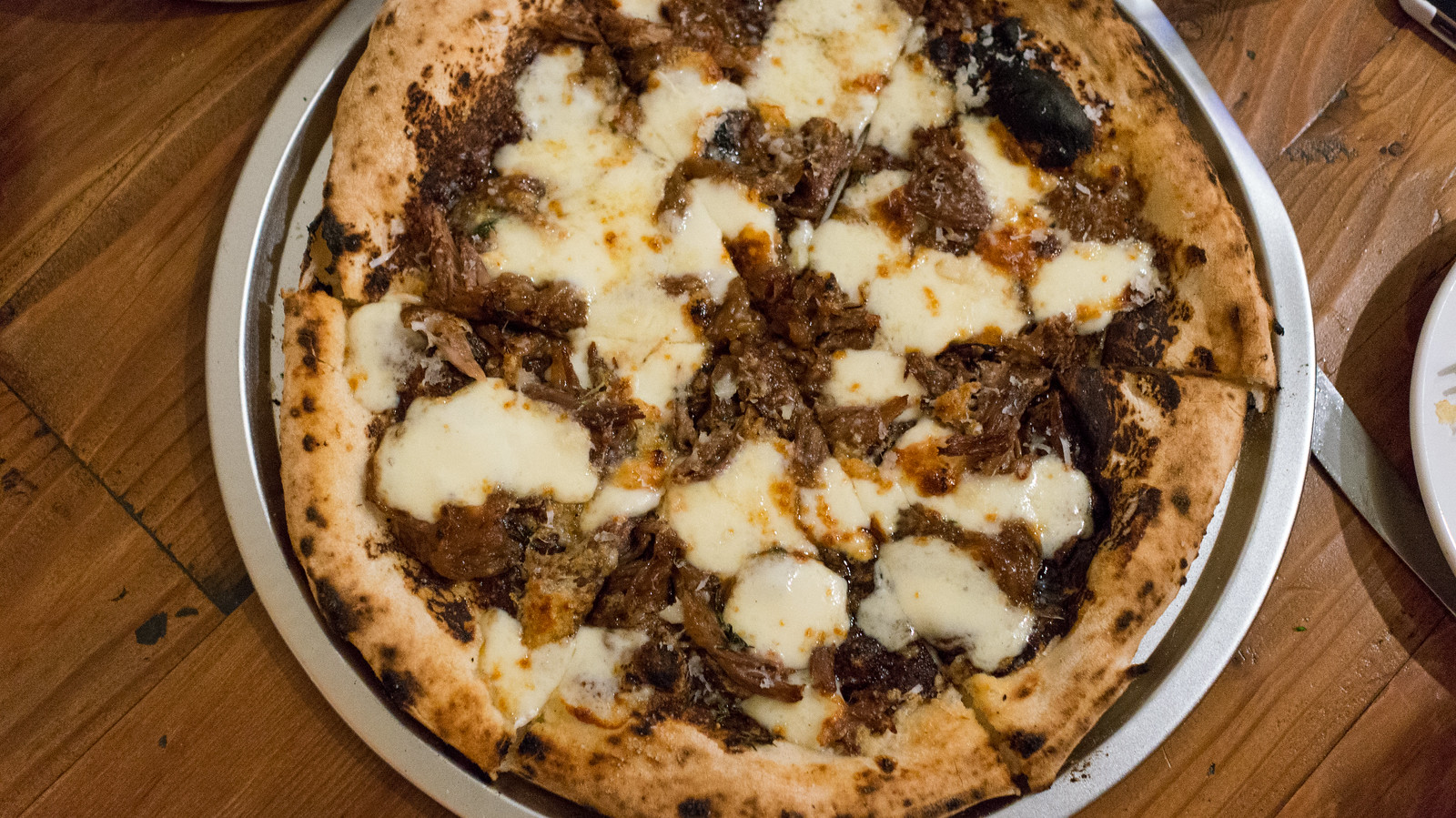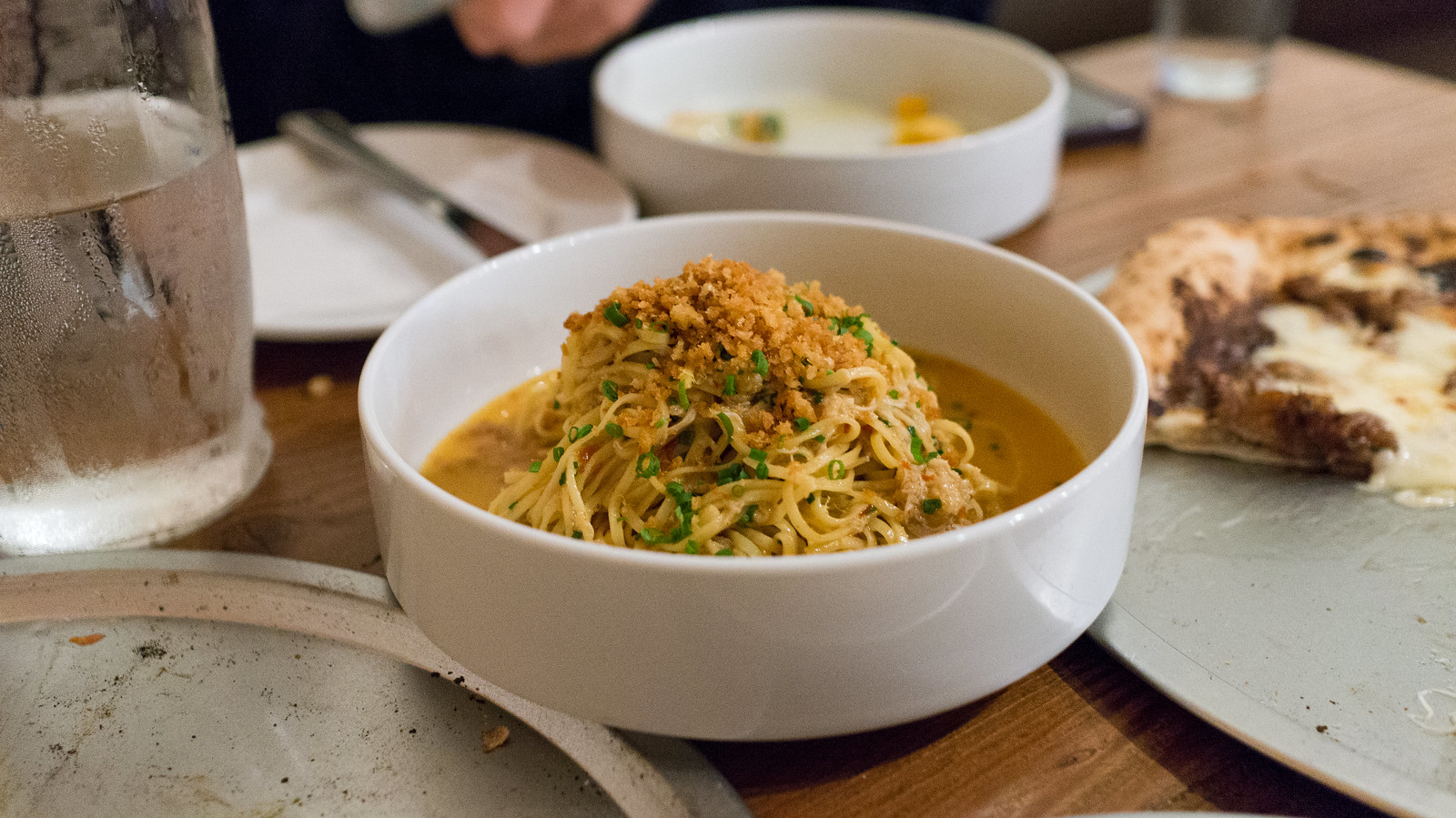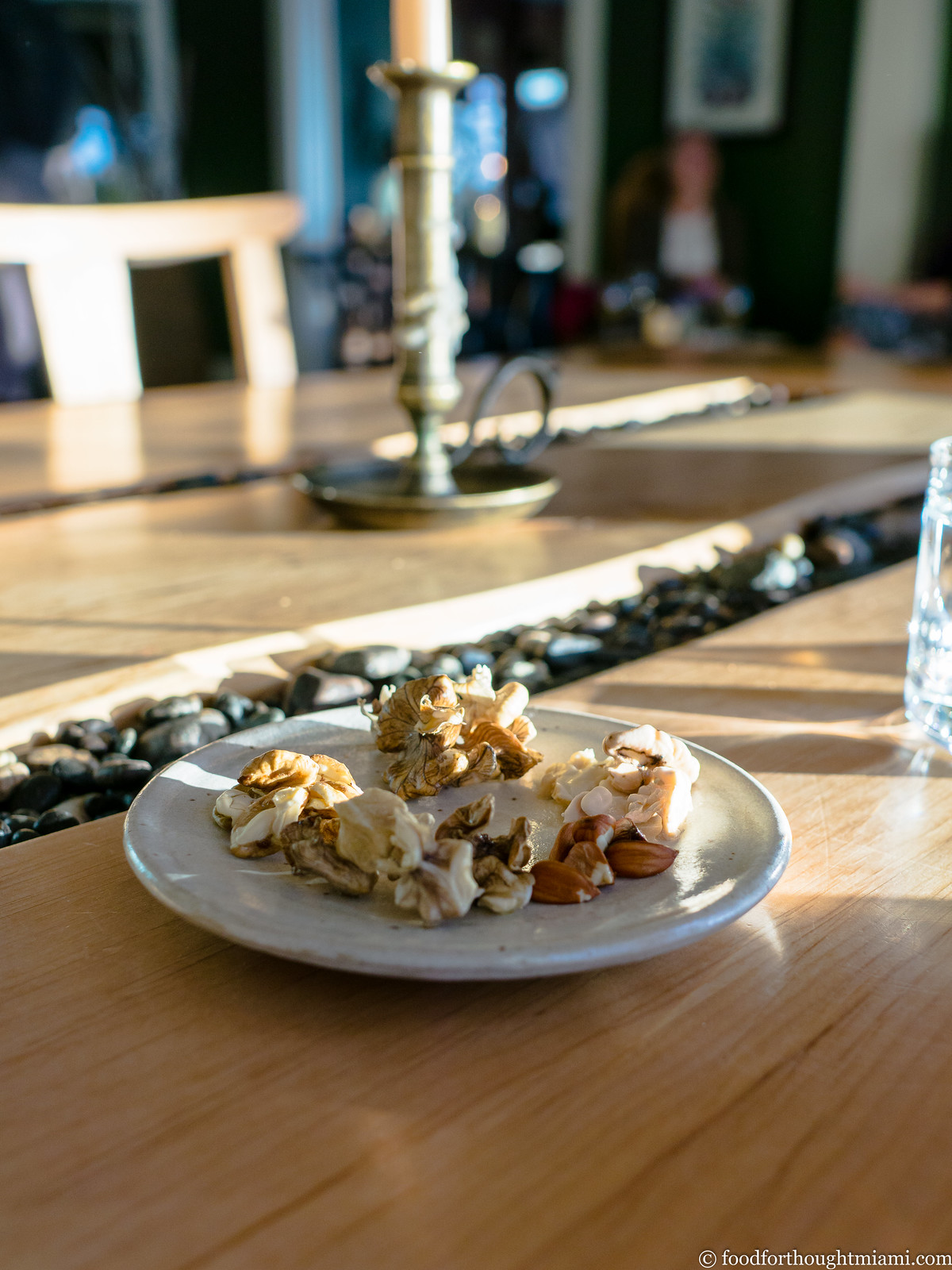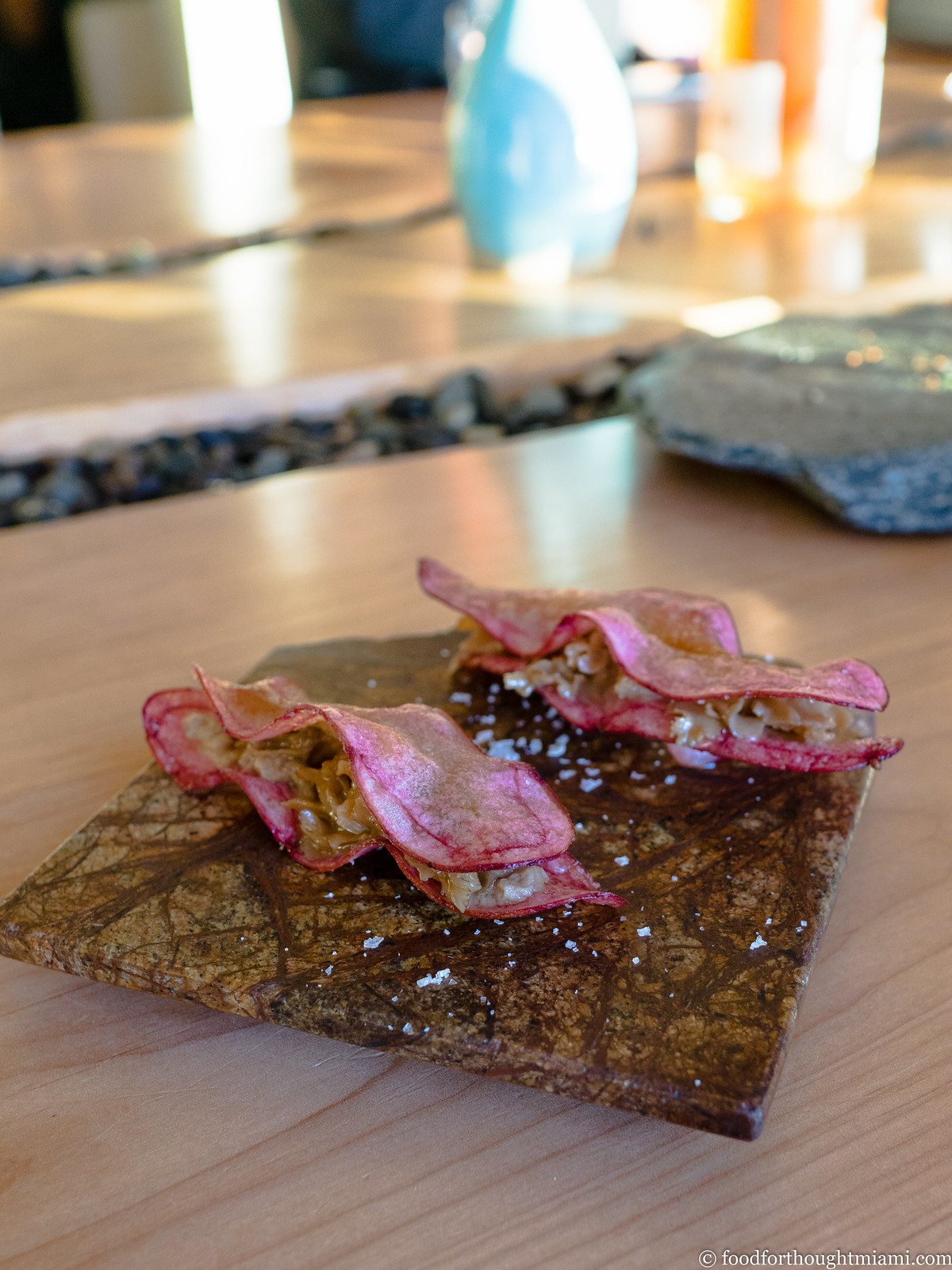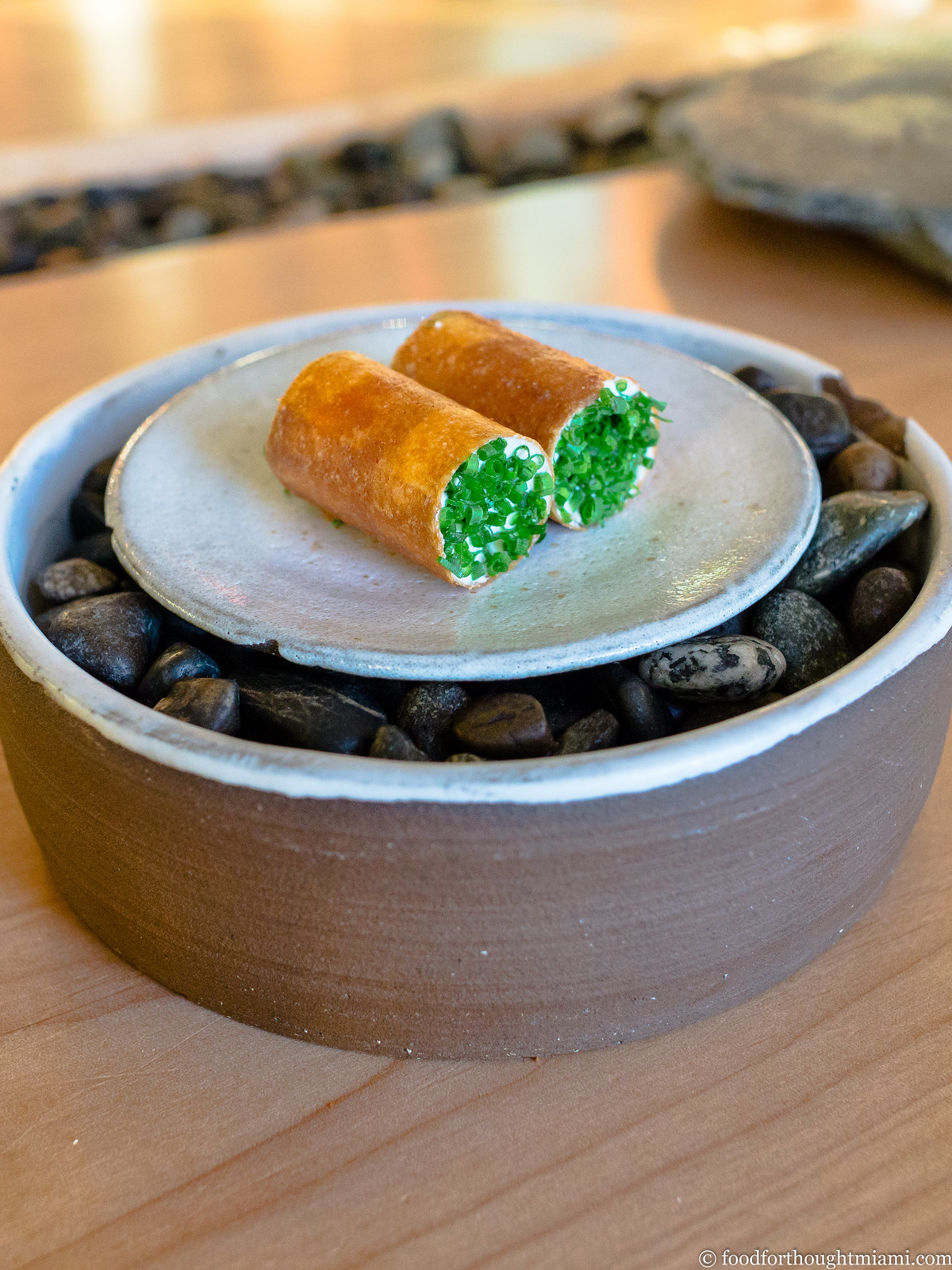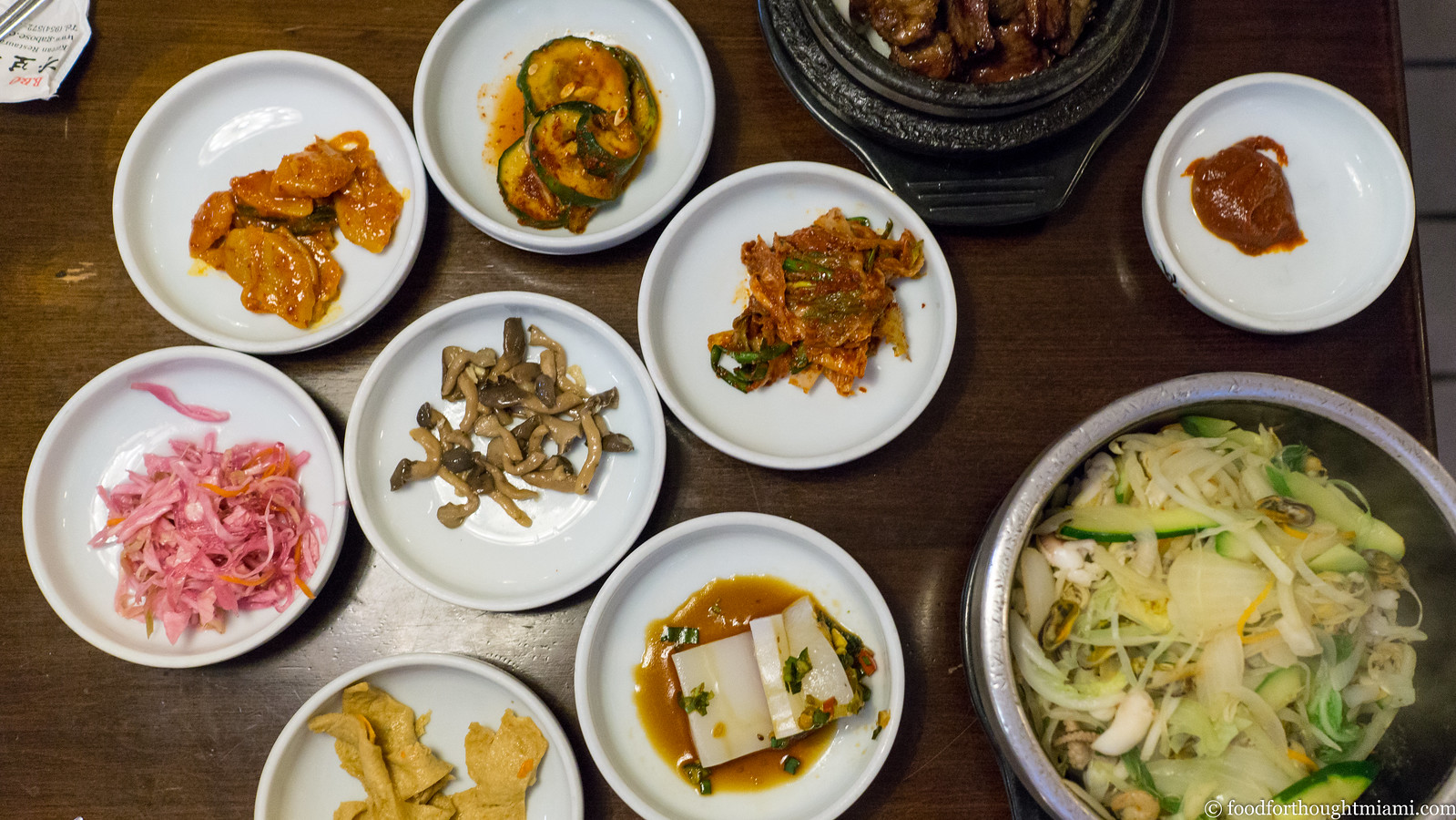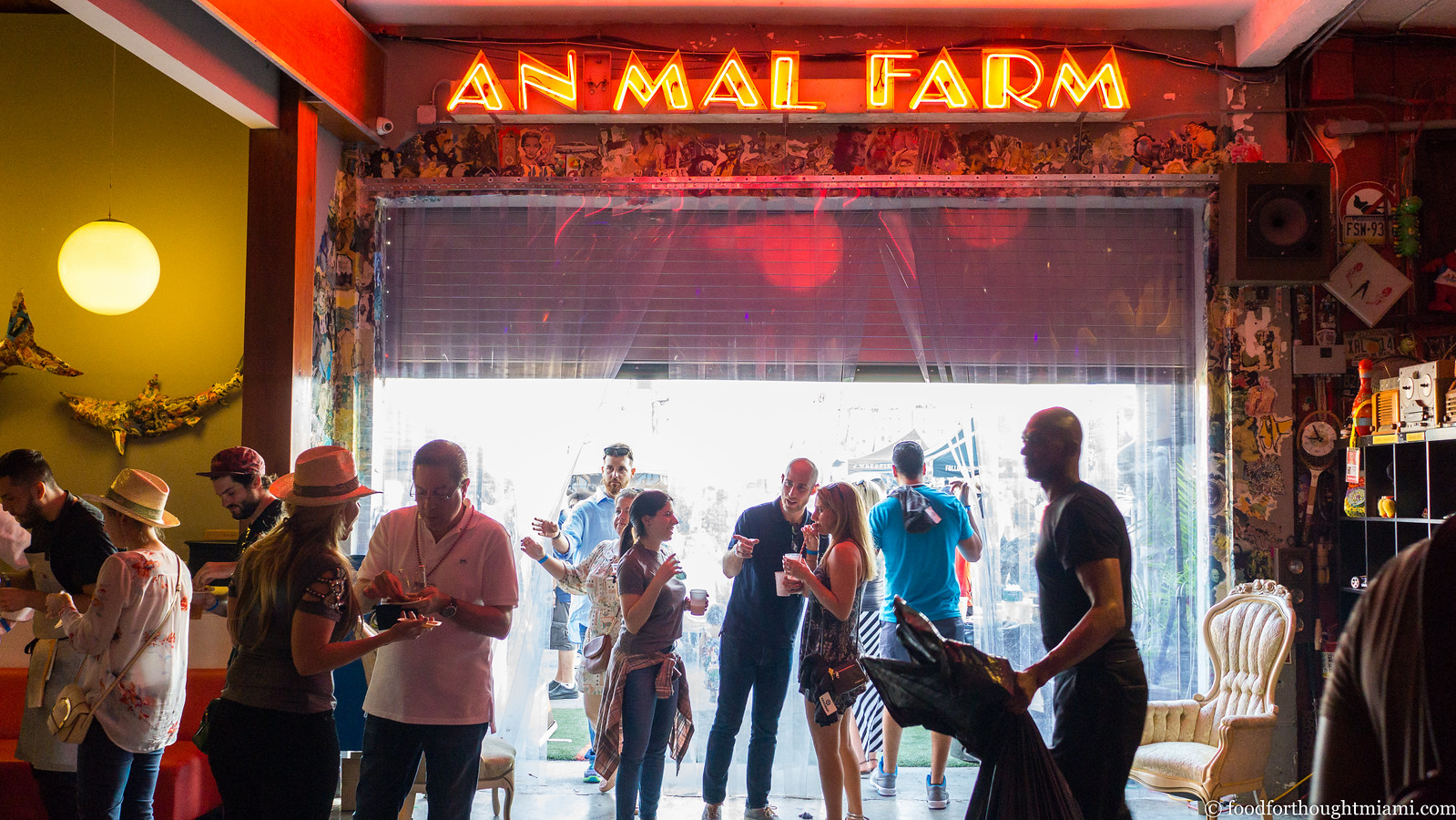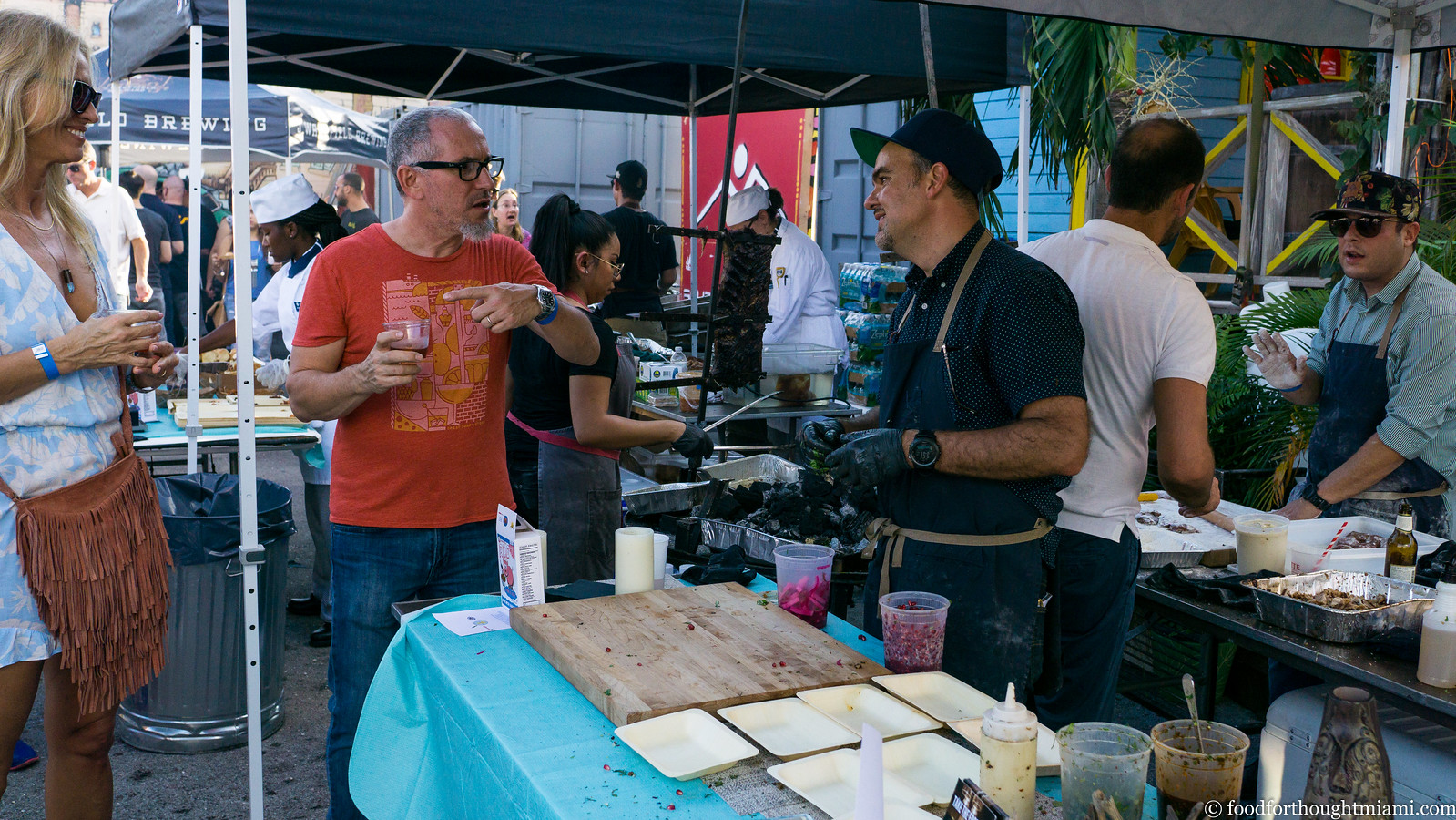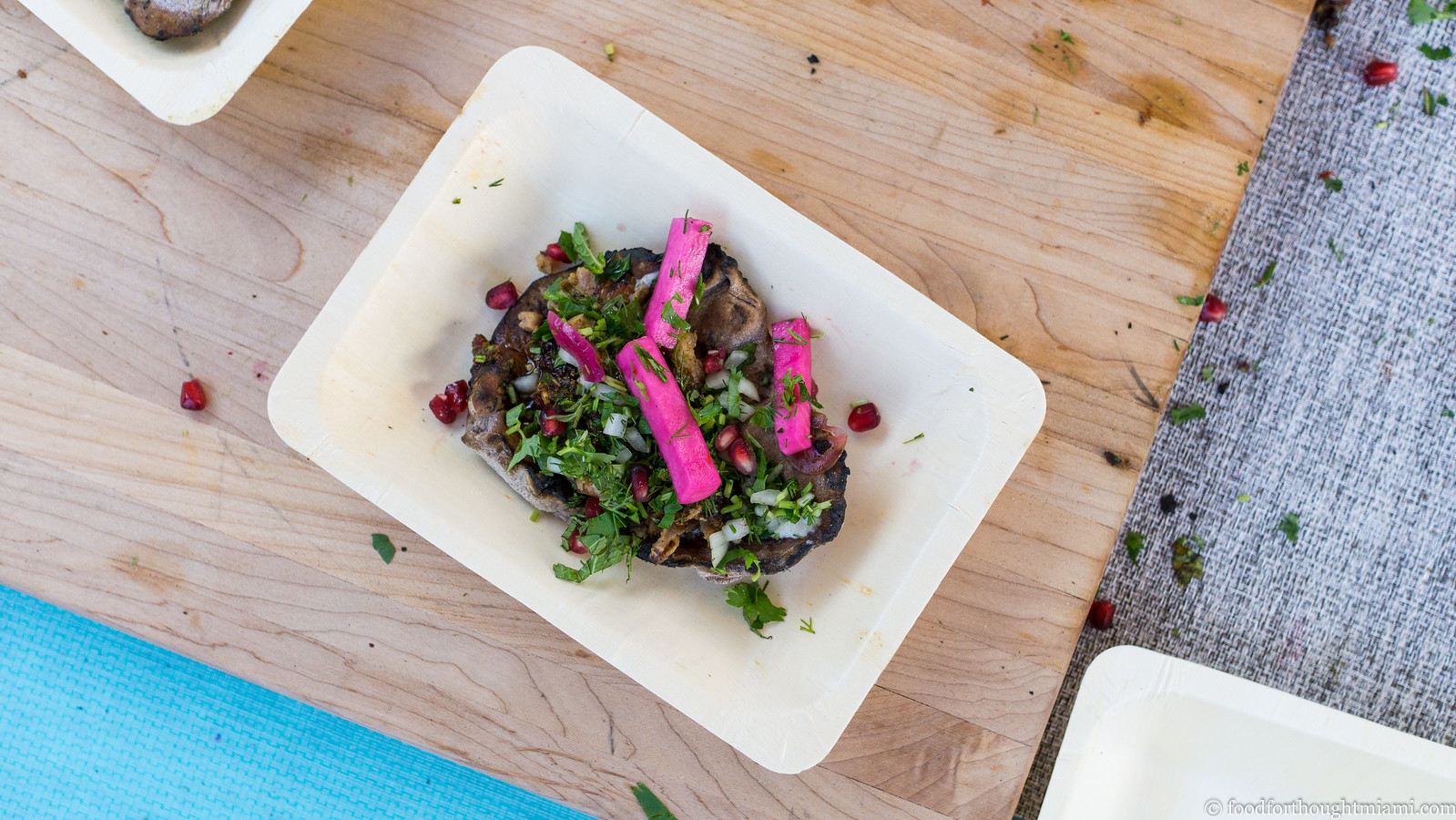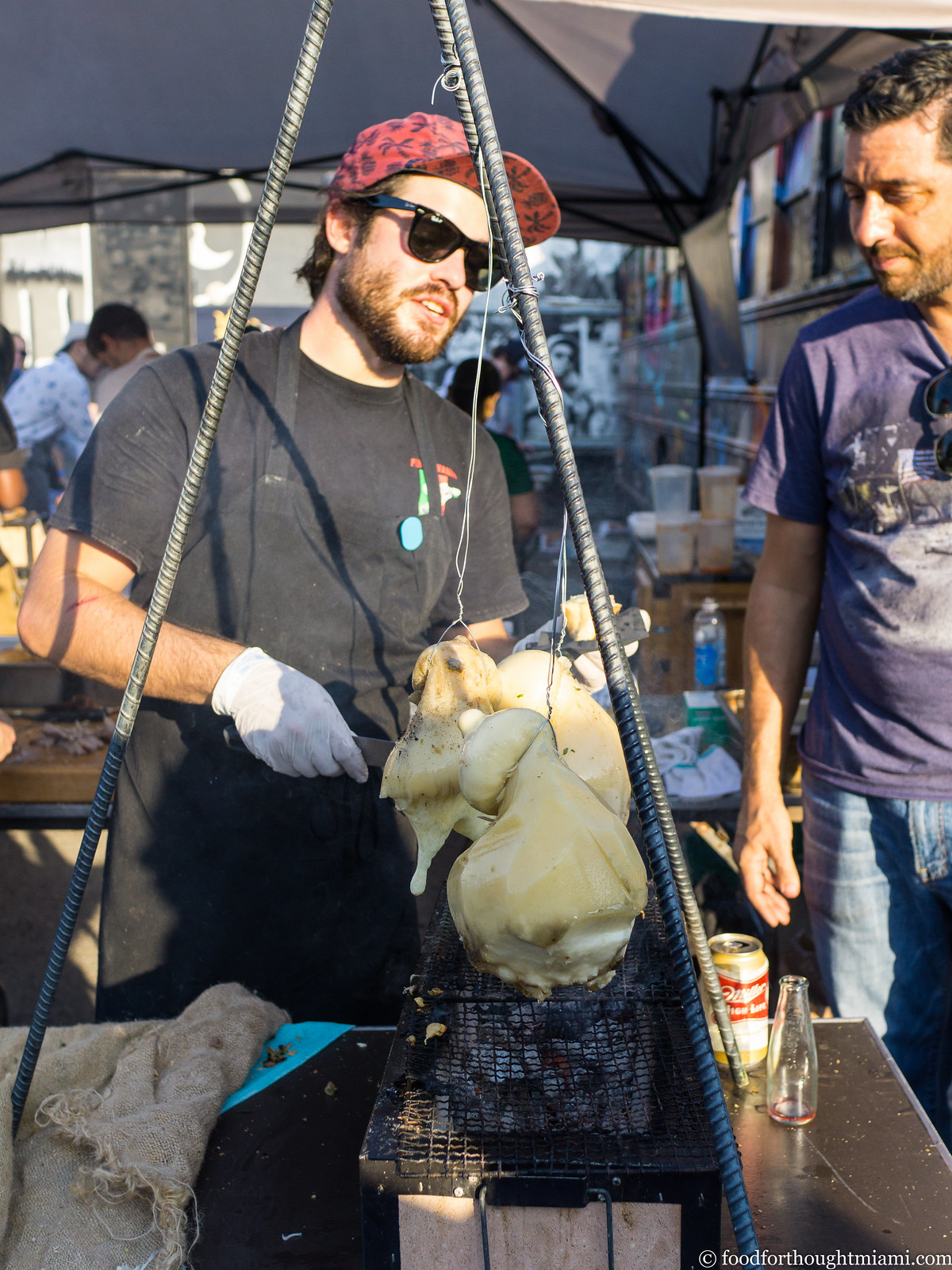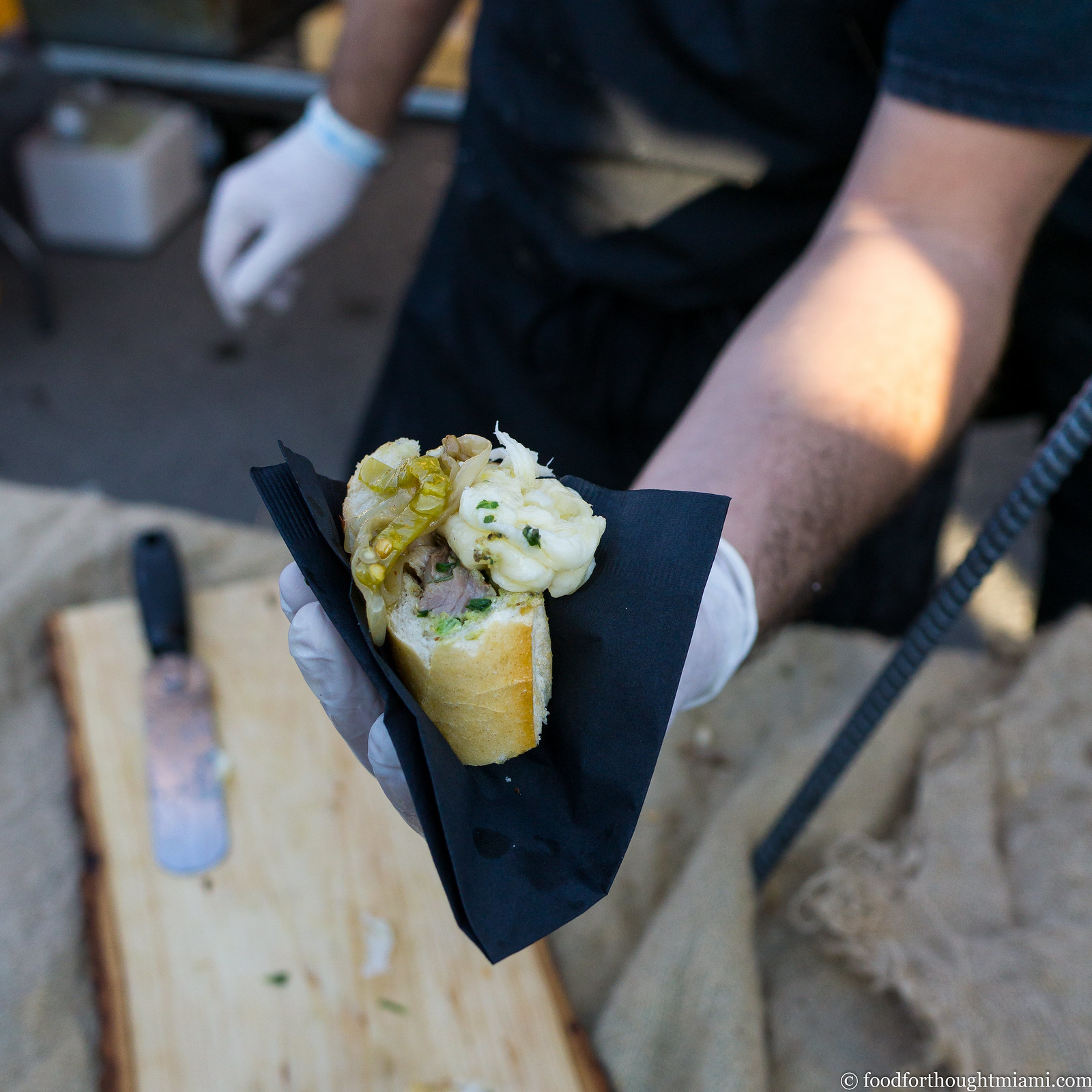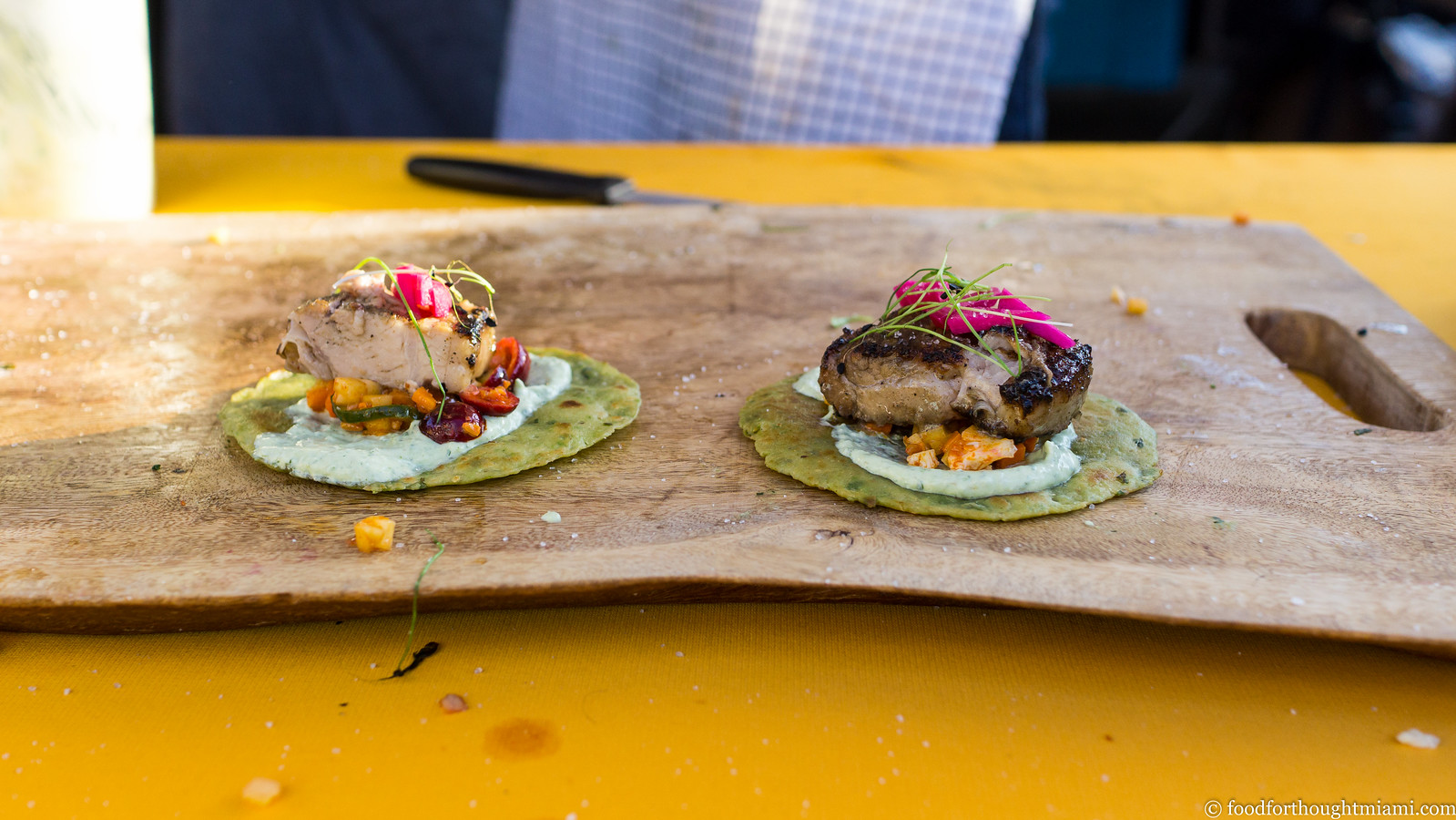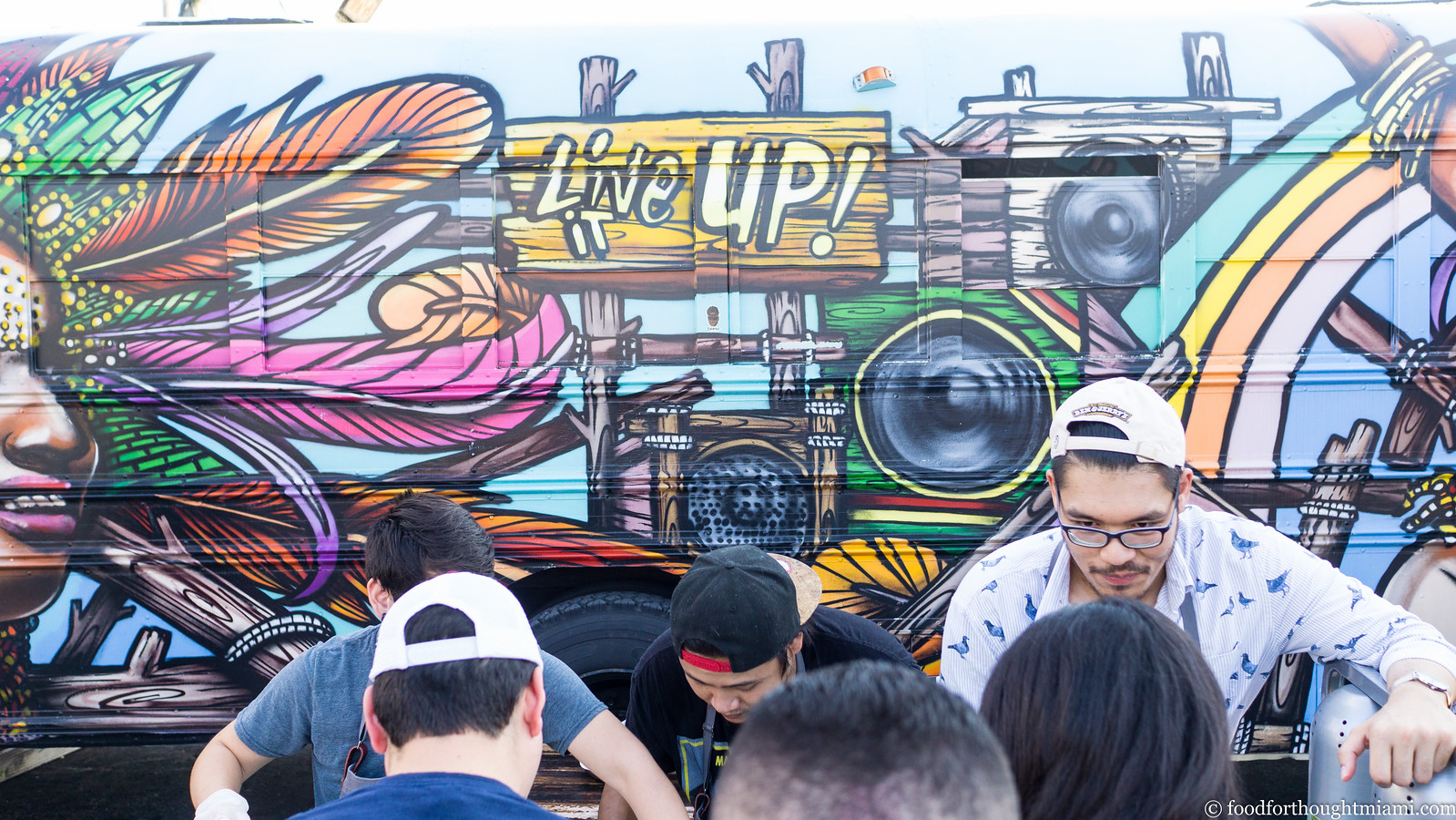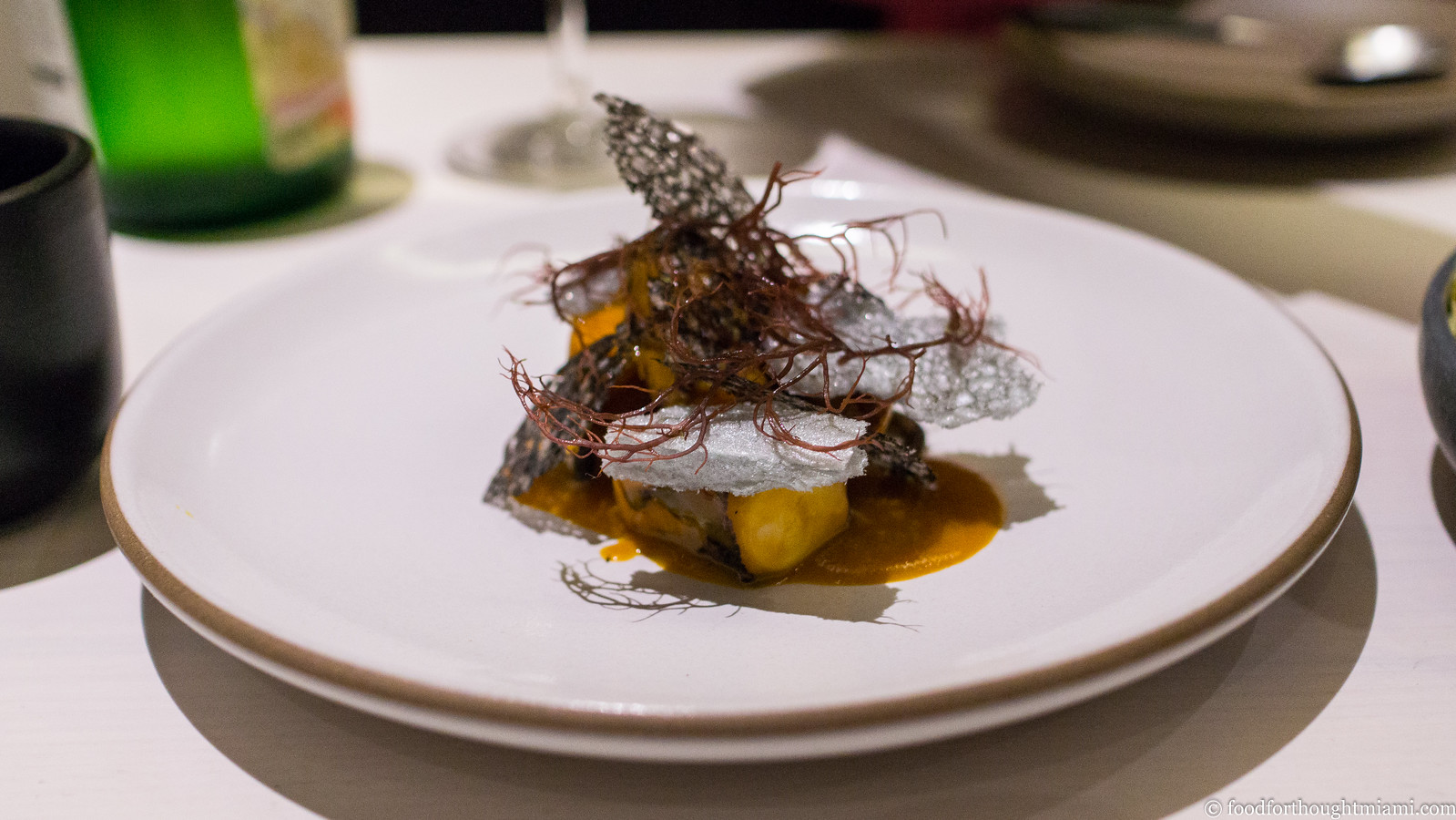Monday, November 28, 2016
deep thoughts: Proof Pizza and Pasta | Midtown MIami
Someone asked me recently[1] "So, when you are going to write an actual review of a Miami restaurant again? You know, like you used to?" Fair question. Like the food writers I used to berate, I'm probably more than a little guilty of the Magpie Phenomenon – being constantly distracted by the latest shiny object. I try to keep relatively current on Miami dining with the "best thing I ate last week" and "first thoughts" posts, and I report on our roughly monthly Cobaya dinners; but then the bulk of my more expansive writing lately seems dedicated to "travelogues" or other recaps from "further afield," rather than locally focused.[2] Mission creep has taken hold.
So let's fix that. And let's start with a place that may not be among the most talked-about restaurants in Miami, but one which I think deserves more attention for what it does: Proof. Chef Justin Flit[3] opened "Proof Pizza & Pasta" almost exactly two years ago just up Miami Avenue from Wynwood, across from the Midtown shopping center. The name was modest and the spot was too: a basic box with exposed ventilation and simple tables and chairs, not so much "industrial chic" as just plain old "utilitarian."
(You can see all my pictures from Proof in this Proof Pizza & Pasta flickr set).
But while it might have sounded and looked like a utility slice joint, Proof was actually serving gorgeous Neapolitan style pies with toppings like soppressata, n'duja and broccoli rabe, or braised oxtail with black garlic and caramelized onions.
And its pastas – all made in-house – were some of the best in town. The lineup would change often, but has included delicate pillows stuffed with butternut squash, awash in brown butter and sage and dusted with crumbled amaretti cookies, and the fantastic angel hair with crab, Calabrian chiles and lemon breadcrumbs. This latter is a mainstay, too good to take off the menu (I wrote a bit more about it in this "best thing I ate last week" from last year).
(continued ...)
Tuesday, November 22, 2016
Willows Inn | Lummi Island, Washington | October 2016
Our first visit to Willows Inn was almost exactly three years ago. It still stands out as one of my most memorable dining experiences. (I wrote quite a bit about it here.) It was so good, in fact, that when we finally made a return visit last month, just seeing this dock – for the Whatcom Chief ferry that traverses between mainland Washington and Lummi Island – triggered a Pavlovian reaction.
There's nothing particularly showy or ostentatious about chef Blaine Wetzel's cooking. Quite the opposite, he willingly sets his ego aside and let the ingredients take center stage. That's not to diminish the skill with which he handles the wonderful things he finds in this little corner of the world, but rather to say that he really knows how to tell a story of time and place through a meal, eschewing unnecessary embellishment in favor of clarity.
So here, then, is the story of Willows Inn, and Lummi Island, on October 9, 2016.[1] More pictures, less words from me this time. (You can see all the pictures in this Willows Inn - October 2016 flickr set.)
We arrived early afternoon, dropped off our bags, were happy to see the smokehouse in action, and took a long walk on Sunset Beach, which stretches along the shore just beneath the inn. Wetzel has added a brief mid-day menu of simple things to nibble on before dinner, but our timing was off and the kitchen was already gearing up for dinner service by the time we got back to the inn.
As on our first visit, the meal starts with a series of snacks; but this time, they were served on the patio and in the Inn's cozy living room, rather than the dining room. Since there is only one dinner service a night, all the guests gather at the same time, and the atmosphere is more casual dinner party than stuffy tasting menu temple.
First, an assortment of raw, shelled nuts, paired with Eaglemount cider, produced in Port Townsend on the tip of the Olympic Peninsula. An old favorite, undulating ribbons of crispy kale, daubed with a paste of rye crumbs and black truffle. And a new item, for me anyway, sheets of crisp, vibrant pink potatoes, sandwiching a creamy ragout of cauliflower mushroom.
Another old favorite: a fragile, crisp crepe shell encasing steelhead roe and a maple cream, capped with finely snipped chives on the ends. This is just perfect. Followed by a new (for me), perfect bite: puffy, savory doughnuts, filled with silky smoked black cod, and sprinkled with sea salt and dried seaweed. I could eat a dozen of these.
(continued ...)
Monday, November 21, 2016
best thing i ate last week: banchan at Gabose Korean BBQ
Can someone explain to me why there is no good Korean BBQ in Miami? How is it possible, with a population of over 2.5 million in Miami-Dade County, that I have to drive across the county line to Broward to sate this particular craving?[1] Fortunately, Gabose Korean BBQ is only about an hour away, and we happened to already be heading in that direction this weekend.
I was too hungry and impatient to wait for one of the charcoal grill tables, so we let the kitchen do the cooking instead. The gochu pajun (a sort omelet / pancake hybrid like Japanese okonomiyaki) was generously studded with green onion and fresh chiles, a welcome recipe for bad breath. The daeji tofujigae, a spicy soup with tofu and slivered pork, came to the table ferociously bubbling, its broth redolent with Korean chile flakes. The marinated galbi was good as always; the haemul dolsot bibimbap, a rice dish studded with seafood and vegetables cooked in a blazing hot metal bowl, was actually a bit bland before we perked it up with a generous spoonful of gochujang.
But my favorite thing about a meal at Gabose may be the banchan, the little bowls of various pickled and preserved nibbles that accompany every meal. Here, there was a classic napa cabbage kimchi, slabs of some sort of mild-flavored jelly in a sauce of soy, scallion and chile flakes; marinated seitan strips; bouncy little marinated mushrooms; a bright pink, tangy cabbage slaw; a potato salad generously dressed with Korean chile; and zucchini kimchi, more fresh and less funky than the cabbage version.
Is there a Michelin category for "worth a one-hour schlep"?
Gabose Korean BBQ
4991 N. University Drive, Lauderhill, Florida
954.572.4800
[1] I guess I need to try Shilla Korean BBQ / Sushi Cafe out west of the Miami airport.
Wednesday, November 16, 2016
highlights from P.I.G. (Pork Is Good) #7
Seven years ago, about twenty-five folks gathered at the Harvey Seeds American Legion Hall for a celebration of all things porcine, orchestrated by Chef Jeremiah Bullfrog, and P.I.G. (Pork Is Good) was born. I faithfully reported on the event here. Jeremiah's done P.I.G. every year since, and every year it's gotten bigger and better. No longer a one man show, the event now brings together dozens of my favorite chefs in South Florida, plus some special out of town VIPs, and hundreds of attendees. I have repeatedly said that this is my favorite food event of the year, and the latest iteration only validates that.
There were so many stations this year that I couldn't make my way to all of them, but here are some highlights:
(You can see all my pictures in this P.I.G. 7 flickr set).
Aaron Brooks of Edge Steak with some fire-roasted pork belly, served on a blood and black olive flatbread baked on the embers, topped with pork fat tahina, pomegranate chermoula, and hot pink pickles (that's Michael Schwartz trying to steal the recipe).
As Mike Pirolo of Macchialina watches, Craig Giunta's cutting the cheese (caciocavallo warmed over charcoal) to top this pork sandwich doused with salsa verde and hot pepper relish. (Yes, I will keep on making "cutting the cheese" jokes until someone makes me stop.)
Niven Patel is close to opening his farm-to-table Indian restaurant, Ghee, down in Dadeland. His coconut braised pork belly, served on a fenugreek roti with home-made yogurt and pickles, is giving me good reason to make the trip down south when it opens.
I couldn't catch Phuket Thongsodchaveondee of Cake Thai Kitchen without his head down working, but I did catch his sun-dried pork cheek jerky, accompanied by shrimp fat rice with salted duck egg yolks (and, for those with sufficient heat tolerance, a fresh Thai chile to chew on).

Craig Diehl, of Cypress in Charleston, makes charcuterie that will make your mind melt. His station was already pretty picked over by the time I got there, but I did get to try the two pâtés en croûte he prepared, and they were incredible.
(continued ...)
Sunday, November 13, 2016
In Situ - San Francisco
In Situ, the new restaurant in the recently refurbished and reopened San Francisco Museum of Modern Art, is a bundle of contradictions. The chef is Corey Lee, whose tasting-menu flagship, Benu, just retained the three Michelin stars it was first awarded in 2014. But the highly regarded chef didn't create a single recipe for the restaurant. Rather, the menu consists of a rotating selection of other chefs' dishes from all around the world, which the In Situ kitchen sets out to faithfully recreate. In other words, it's a restaurant in the model of an art exhibition, with Lee as the curator.
In this and other ways, including the exhibition catalog-style menu, In Situ clearly advances the notion of chef as artist. But the manner by which it is implemented – with Lee and his crew duplicating the "artists'" creations – undermines the very notions of authorship and uniqueness that are generally thought of as essential to the distinction between "art" and "craft." While Lee is ostensibly in the role of curator and not creator, the lines become blurred: when was the last time you saw a museum curator break out his brushes and hang up his own canvas on the museum wall as the "Mona Lisa"?[1] What you will get here is at best a copy, though it may be a very good one.
Indeed, the very name is a contradiction: "in situ" refers to a site-specific artwork, one that is created for the location. Yet each of the dishes served at In Situ was created for and is usually served in some other restaurant.
All of which is to say this: In Situ is possibly the most thought-provoking restaurant experience I've had in years. But unlike many restaurant experiences that aim to be thought-provoking, this one was also a lot of fun and mostly really delicious.
(You can see all my pictures in this In Situ - San Francisco flick set).
A big part of the fun at In Situ is that the restaurant acts as both Star Trek transporter and Dr. Who time travel TARDIS telephone booth. Here, in one meal, you can sample dishes from thousands of miles away, and even from decades past – some of which may no longer even be available anywhere else.[2]
For instance, the lead-off item on the menu[3] during our visit comes from chef Wylie Dufresne. His restaurant in New York's Lower East Side, wd~50, was a mid-aughts "molecular gastronomy"[4] trendsetter. But I never managed to get there before it closed in 2014.
Yet here are Dufresne's "shrimp grits," a dish which subverts the classic Southern pairing, turning the shrimp themselves into the grits by chopping, cooking, finely grinding, and finally re-warming them with powdered freeze-dried corn, then garnishing with pickled jalapeños and a bright orange shrimp shell oil.
If I'm to be honest, one of the reasons I never ate at wd~50 is that I wasn't convinced I would have enjoyed an entire meal there: the place often gave me the impression that form was being elevated over substance, creativity over flavor. But that's another of the interesting things about In Situ: it's a chance to sample a chef's cooking (at least vicariously through the medium of Lee and crew), without the commitment of a full meal. Turns out, this dish was excellent: intense crustacean flavor, combined with a nostalgic creamy, nubby grits texture. Perhaps I misjudged. But In Situ offers a taste of what I missed.
We were in Kyoto a couple years ago, but did not go to Gion Sasaki, a kaiseki style restaurant that is a notoriously difficult reservation. So here is another "missed opportunity" dish. Tender, meaty chicken thighs are glazed with a delicate teriyaki sauce (not the gloppy syrupy stuff we get here, but a fine calibration of salty, tangy and sweet); concealed beneath them is a wobbly "onsen" egg (probably cooked in an immersion circulator rather than the traditional hot spring), mounted in a bed of crunchy lettuce, and dusted with tingly sansho pepper. It's Sasaki's version of "oyako," i.e. "parent and child" (chicken and egg), and it's superficially simple but elegantly balanced.
One of the challenges In Situ faces is finding dishes that can be replicated without access to all of the ingredients used by chefs whose restaurants may be thousands of miles away. Virgilio Martinez's cooking at Central in Lima, Peru is indelibly tied to indigenous products, many of which are found nowhere else in the world. So when he chose a dish for the In Situ menu, he had to do something that would "travel well." (More interesting tidbits in this conversation between Martinez and Lee captured by Lucky Peach).
His "Octopus and the Coral" is the result: plump octopus tentacles basted in a spicy rocoto chile paste, hidden beneath shards of silver savory meringues, dark grey rice crackers, and tufts of red seaweed, meant to appear like an octopus crouching within a coral-covered rock beneath the sea. It was a good dish, though not nearly as interesting as several dishes Martinez prepared for a dinner at Alter restaurant in Miami earlier this year.
(continued ...)
Subscribe to:
Posts (Atom)



